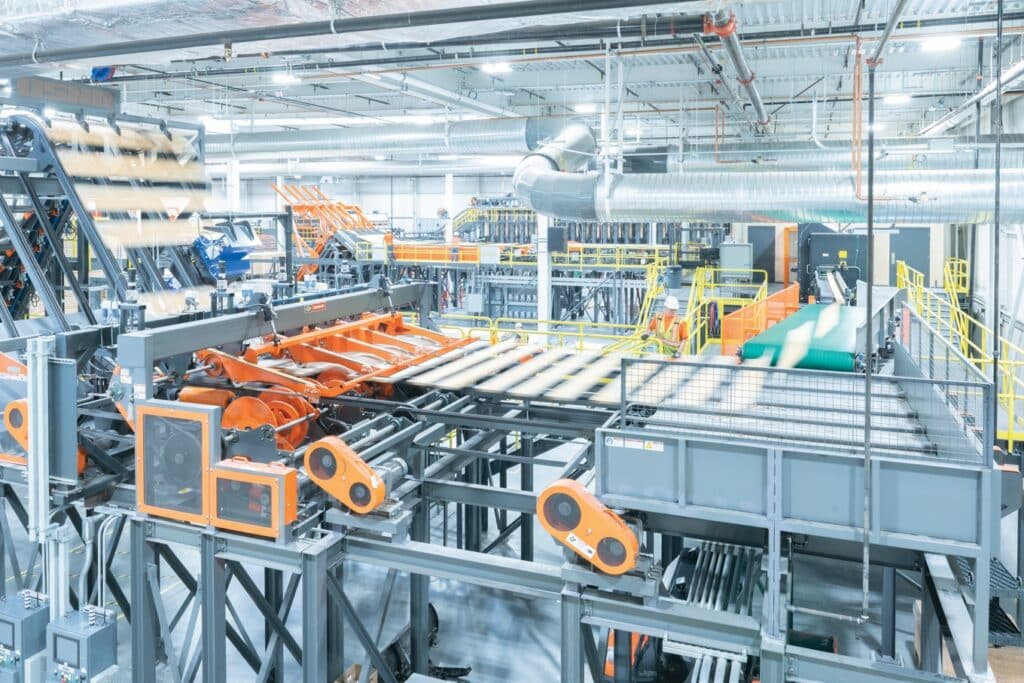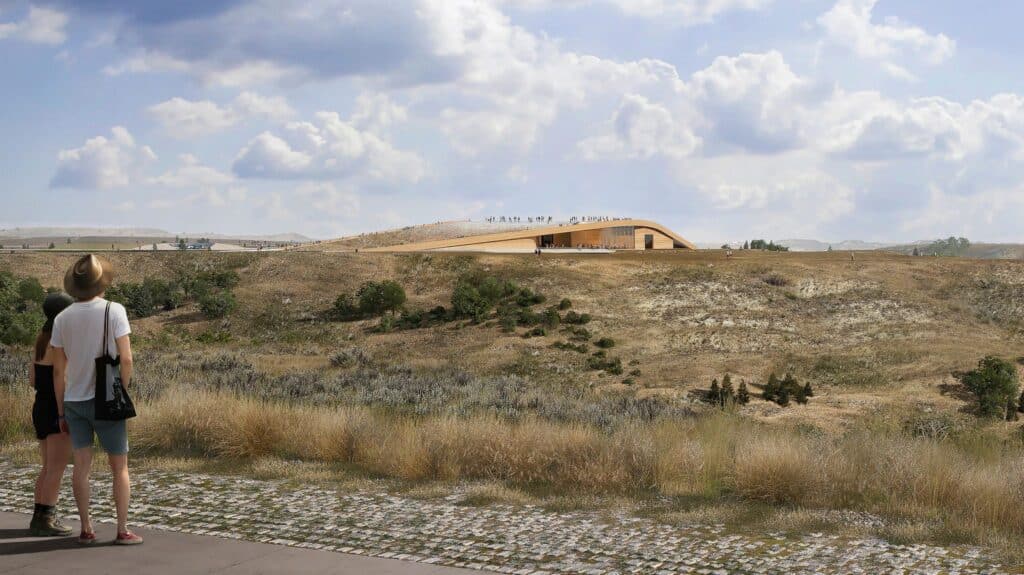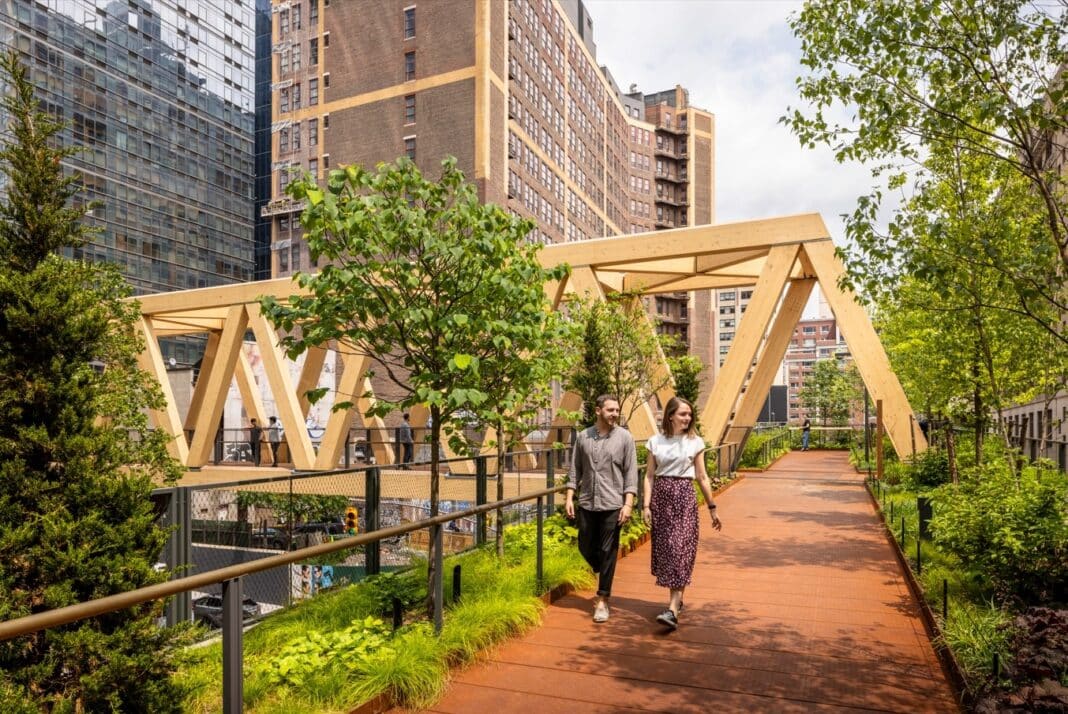The building industry is changing with the emergence of technologies—first with BIM and now AI— which, together, are making construction smarter and more efficient than ever before. That is according to Nick Milestone, Vice President of Projects and Construction for Mercer Mass Timber, North America’s leading mass timber provider:
“Mass timber is almost the next industrial revolution or the next industrial evolution,” Mr Milestone told Wood Central in an interview earlier this week. “We are starting to see that in the rollout of software packages, where structural steel software is now adapting itself to mass timber.”
“Now, we don’t need to push the knowledge of mass timber onto people; it will naturally grow.”
Nick Milestone, Vice President of Building and Construction speaking to Wood Central
Mr Milestone is a four-decade veteran of construction manufacturing (39 years, to be precise) with deep expertise in structural steelwork and, since 2006, in mass timber too: “Back in the UK (his native country), big retailers wanted to do eco-friendly stores, we came up with a hybrid model (timber with steel) to reduce costs and maintain carbon neutrality.”
“Cross-laminated timber (or CLT) was a real game changer for our industry,” Mr. Milestone said. “Now we had these full structural steel frames with CLT floor decks, full mass timber residential developments.”
According to Mr Milestone, timber-and-steel hybrid systems are symbiotic: “You can have a steel frame with CLT floors or some CLT shear walls, or you can mix it up with glulam beams and columns with structural steel purely because of the tolerances.”
Today, Mr Milestone is based at Mercer Mass Timbers headquarters in Vancouver, Canada, which has now emerged as a global melting pot for timber engineering; however, as he points out, the North American market is still only eight years old but has enormous potential.
“If you look at the growth cycle of Europe, and you took the year 2000 as a baseline, it had steady growth for about seven or eight years before the demand just took off. By the same token, if you took a timeline in the US and stated in 2016, you would think that between 2023 and 2024, we should see that huge uptake.”
Mr Milestone on the take up of mass timber across the USA
One thing North America is not short on, however, is timber resources—”We have a wide variety of species, whether it’s Southern Yellow Pine, Whitewood Spruce, Spruce-Pine-Fir (SPF), or Douglas fir,” he said, adding that “now it’s a case of investment in facilities and bringing in all that knowledge and technology from around the world.”
The United States International Building Code has also helped fuel growth: “It’s a federal code that goes across all the states, which is very different from Europe, which is incredibly fragmented with 28 countries with varying building regulations resulting in peaks and troughs around certain pockets of Europe. What we’re seeing in North America is a rollout with greater acceptance of the building codes.”
Moving forward, North America is tapping into new technologies—including light gauge load-bearing steel walls—with Mercer Mass Timber now using cross-laminated timbers as a substitute for concrete floors, which could help push the needle and boost mass timber’s building material market share from 1% to 2% or even 3%.
“What we are doing is looking at more routes to market for mass timber, be it on a structural steel frame or a light gauge steel frame. What we are doing is reducing the concrete in buildings,” Mr. Milestone said. “We will never truly remove concrete; we still need concrete for carparks and structural cores, but what we can do is mix concrete, steel and mass timber together to create a very dynamic solution which reduces the construction schedule by 20-25%, which can have impact the cost of the whole building from between 10-12%.”
“It also makes the structure incredibly lighter, which impacts the foundation design, such as how quickly you can get more follow-on suit trades into the buildings. So, effectively, the developer or the building owner will realise that asset much sooner and get a much quicker return on the investment. And that’s just a bit of smart thinking by using very lightweight dry forms of construction.”
Mr Mileston on how mass timber is being combined with steel and concrete in the future of construction.
As a subsidiary of Mercer International, one of the world’s largest forest products companies, Mercer Mass Timber operates three mass timber plants—one in Canada and two in the United States—making it the biggest domestic supply into the North American market.

Together, the three plants work to meet construction schedules: “We need the growth to go from 1% to 2% and 3% of the total building material market because we are fulfilling current supply on a single shift.”
“We do hear stories where there’s not enough supply for the demand right now, but that’s simply not true. We can increase our shifts from one to two to three to cope with the demand. And if we get to the point where we can sustain two shifts, I expect we’ll be looking at a fourth facility. And that’s where the excitement comes from.”
Mr Milestone on the massive growth potential in the North American market.
“But right now, there is more than enough supply capacity in North America to fulfil its demand. And there’s not just domestic supply, there’s European supply as well.”
Mercer Mass Timber has been involved in several high-profile projects, including Teddy Roosevelt’s Presidential Library, which will be built under the Living Building Challenge. Among its completed projects is the New York City Moynihan Connector, a 100-meter timber bridge that connects the High Line at Penn Station and Moynihan Train Hall in Midtown.

Nick Milestone will be a keynote speaker at Timber Construct.
Mr. Milestone will be one of nine international speakers who will present (remotely) at Timber Construct, Australia’s largest timber construction conference. According to Andrew Dunn, the conference organiser, Mr Milestone and Mercer Mass Timber are leaders in timber hybrid construction at the forefront of the mass timber wave.
“This is why we are thrilled to have Nick dial in from overseas,” Mr. Dunn said. Mr. Milestone will join Perry Forsythe, the Emeritus Professor at the University of Technology, Sydney, to discuss the North American mass timber skyline and lessons to learn in an Australian context.
“So far, we have 39 presenters lined up,” Mr Dunn said, with the Melbourne event “focused on materials and design, prefabrication, and building techniques.”
“Tickets are still on sale for the August 12 and 13 event,” Mr Dunn said, “so secure your early bird tickets before it is too late.”






